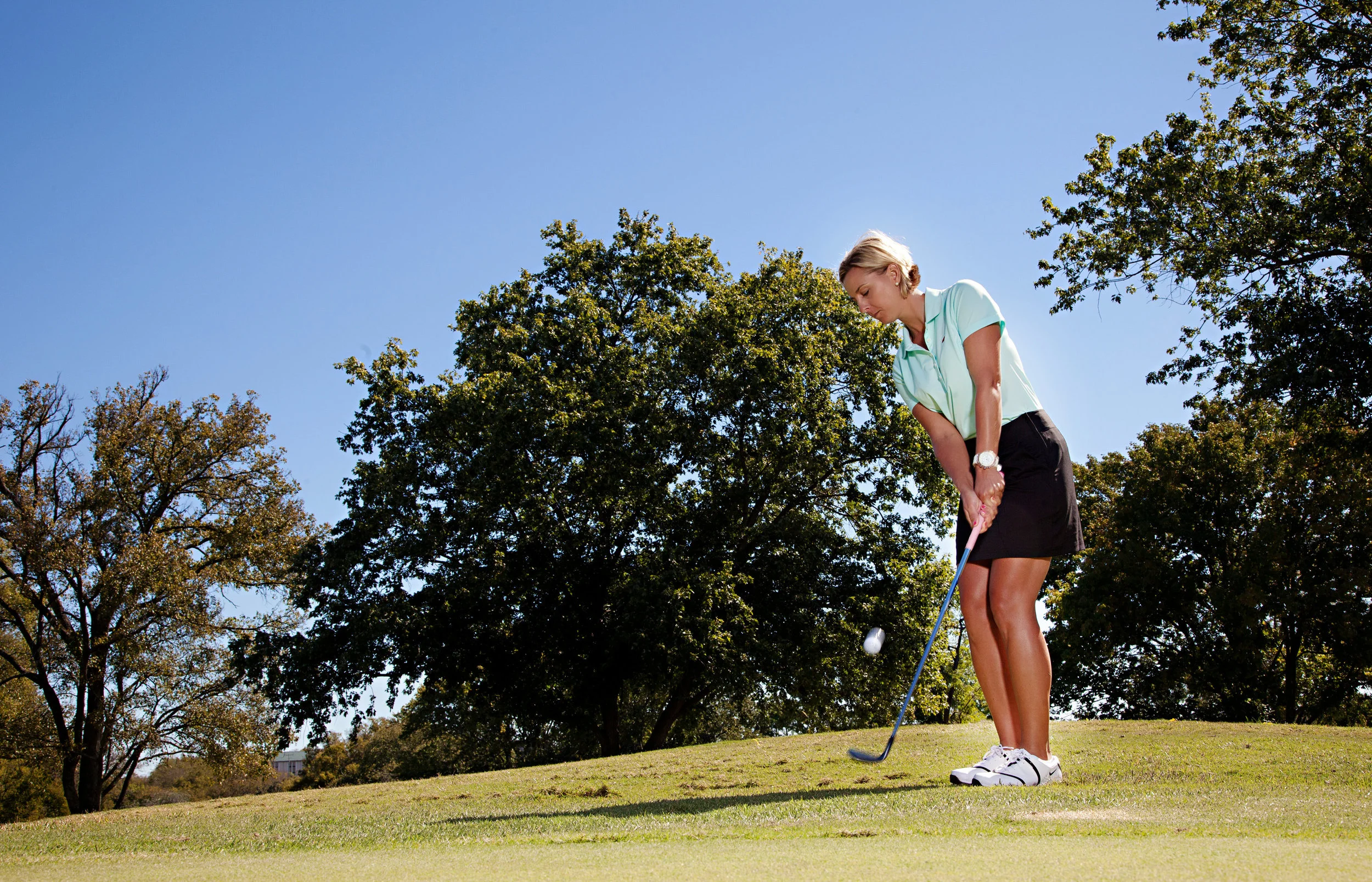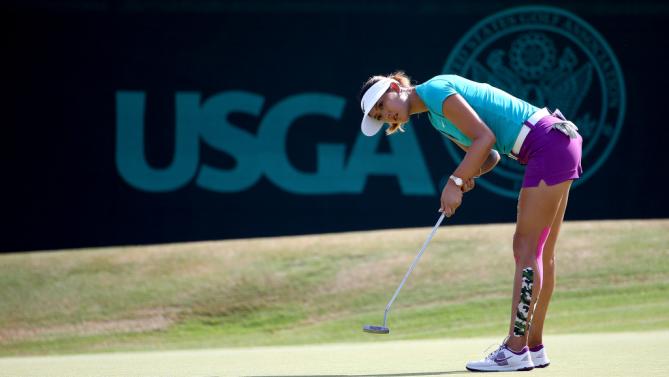Four Fundamentals of Putting
/photo:sports.yahoo.com
Michelle Wie has been hot on the LPGA Tour this summer. Placing in the Top 10 multiple times and winning the Women's US Open, Wie has proven she is a competitor in the golf world. Her new putting style is unique, effective and has golfers everywhere talking. Here are a few thoughts on how you can become a better putter by following the 4 fundamentals of putting. This posture may look uncomfortable on her back but Wie told Golf Channel's Morning Drive her new posture feels great because she is now using all legs. And she can see the line better than every before.
Now, I'm not suggesting you go out and try Michelle's new posture. Although I can speak from personal experience this setup position feels amazing. What I am suggesting is you can learn from Wie's posture and how you can apply the 4 S's to your personal putting style. Still, Solid, Square, Speed. Keep in mind a good setup position can help accomplish these 4 fundamentals.
Still - Your eyes, head, neck, chest and lower body should remain extremely quiet and still through impact and after impact. When your body is still you have a better change of producing solid impact and maintaining a square putter face. If your body moves a quarter inch your putter face may be affected. The arms and shoulders should be the only body parts moving during the putting stroke. Remember wherever your eyes go the body may follow.
** Practice keeping your eyes and chest facing the ground after impact. **
Solid - There is nothing better in golf than the feeling of solid impact on the putter face. Learning to make solid contact requires a pendulum motion with the putter head. It's a tick, tock motion with a slight acceleration through impact. Be careful not to push the ball. Roll the ball.
** You can accomplish this feeling by closing your eyes and feel the weight of the putter head. **
Square - The putter face should be square to the intended target line at impact. I know this sounds simple but I see golfers, including myself, leaving the club face open or closed at impact. Trying to guide the ball into the hole can cause the putter face to move. Trust the alignment and roll the ball with solid contact.
** Looking to make more 6 foot putts under pressure? Pick a blade of grass located on the front of the cup. This is the spot you want to roll the ball over. Put your attention on that blade of grass and roll the ball over that spot. Instead of focusing on the consequences of missing the putt, focus on the part of the hole you want to roll the ball over. **
Speed - Depending on your handicap level, the majority of your putts are going to be distance putts. This means distance can be more important than alignment and accuracy. The key to becoming a great putter is learning how to control the speed of a putt. Every putting stroke should be a true pendulum with a consistent rhythm. The putter head swings back and through about the same distance. The way to adjust your speed is to change the size of your pendulum. A 5 inch backswing will produce a shorter putt than an 8 inch backswing. Keep the tempo the same for every putt. You don't need to "hit" harder or softer.
Here is a video I put together with examples from Michelle Wie and one of my students. Pay careful attention to how still her body will remain through impact. By staying still in her posture she can make solid contact, keep the putter blade square to the target and control her speed with consistent tempo.
Not sure where to start? Check your fundamentals by starting at the top of the list. Stand in front of a mirror and find a posture that will allow your body to remain very still through impact. If you are standing too upright your body may have to move during the stroke. Please feel free to contact me with any questions about your game.






